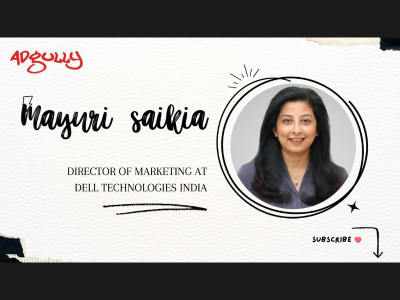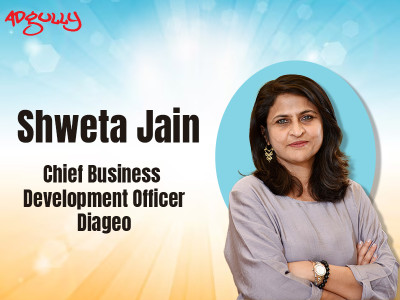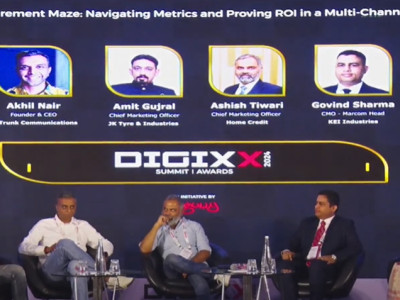Exploring the next frontier for gaming monetisation
One of the fastest growing markets today, the revenue in the Games market is projected to reach $396.20 billion in 2023, as per Statista Report. The revenue is expected to show an annual growth rate (CAGR 2023-2027) of 7.70%, resulting in a projected market volume of $533.00 billion by 2027. India is an important market for the global gaming industry, with a sizeable gaming population.
With such huge monies at stake, it has become imperative to sharpen focus on monetisation avenues for game developers and platforms beyond the pay-to-download model. There are, of course, other monetisations options such as in-game advertising, consumers buying games, gamers spending money on microtransactions, paying for enhancements, and more.
As players immerse themselves in rich narratives and dynamic gameplay, developers and publishers navigate a complex landscape of innovative strategies to sustain and grow their digital realms. From in-game purchases and subscription models to virtual goods and real-money trading, this story delves into the diverse strategies, challenges, and evolving trends that shape the fusion of gaming and monetization, redefining how we engage with entertainment in the digital age.
Personalised in-game advertisements
Speaking about how to make in-game advertisements more personalised to gain gamers interest so that they just don’t skip it, Rohit Agarwal, Founder & Director, Alpha Zegus, said that going vernacular is the only way. “Clever wordplay is the way to go! You either go vernacular with your content, which makes the messaging personalised, or you go bold and quirky in order to talk to the audience as a human, and not as a brand. Do not stereotype gamers by using very generic gaming jargon, but rather give them a sense of inclusiveness,” he added.
Aadesh Anish, Yield Engineering Manager, Gamezop, noted, “Personalisation of the user experience is synonymous with data collection. Cognizant of data privacy concerns, we place a strong emphasis on gathering and ethically analysing player data to gain insights into their gaming behavior, preferences, and demographics. This valuable information, along with strategic alliances with ID solutions and data providers, enables us to thoughtfully segment our audience, ensuring the protection of individual privacy while tailoring advertisements to factors like gaming genres, playing habits, and player profiles. Even when 3rd-party cookies, which are almost the backbone of programmatic advertising today, deprecate, the emphasis on first-party data is going to be paramount in delivering this personalized ad experience.”
He further added, “We also work with our advertising demand partners to try and align ad content with the context of the game. Through this, we minimise disruption and enhance the player's overall experience. For example, if a player is in a sports-based game, we try to deliver ads related to sports-themed products or services. As ad serving is done programmatically, we serve ads that are dynamically updated in real-time. This also enables us to offer time-sensitive promotions and events that are highly relevant to the player’s current gaming session.”
New monetisation opportunities in gaming
Apurv Abhay Modi, MD & Co-Founder, Atechnos, believed that there are some new tricks. “You’ve got subscriptions, which are like a backstage pass. Gamers pay a bit every month and get special stuff like exclusive levels or cool items. Imagine having this backstage pass to your favorite game. You get exclusive content, in-game currency, and even early releases. It’s like being part of the VIP club where the goodies just keep coming,” he added.
Continuing further, Modi spoke about the idea of virtual treasures, herein players can buy stuff like fancy outfits or superpowers in the game. People are even trading unique game stuff like collectible cards in the digital world, using something called NFTs. Plus, sneaky little ads that blend into the game’s world are making some noise.
According to Ravi Kiran, Founder, GoLive Games, “NFTs are a new wave of monetisation in games. Unlike earlier games, where users couldn’t claim the assets they purchased in the game, blockchain technology allow players to retain these assets they purchased. These players have more incentive to make the purchases.”
Aditya Pandit, Director - Digital Planning, Carat India, had some brilliant examples. He said, “While the bigger chunk lies where brands directly partner with the makers of the game like the perimeter board ads in FIFA, the monetisation concepts are growing exponentially both at large and small formats. Advertising beyond banners and videos goes way back to 2008, when Barack Obama was running for elections. Billboard ads were seen in Need for Speed Carbon or Burnout Paradise. Recently, Nike partnered with Fortnite to promote their latest Air Jordan collection, where users could customize their avatars with the latest Nike kicks. While these integrations are on a bigger scale with a big-ticket size, there is also new-age tech enabling advertising at a lower scale. Streamer ads, for example, where ads are being dynamically placed on YouTube streams. The ads are like Aston bands, which are in rich media format and very eye-catchy. They are very engaging and yet do not disturb the stream. This way the streamer makes an additional income, the viewers get to see the ad without any interruption and brands get to communicate most engagingly. It is a win-win situation for all.”
How to have a more systematic & effective monetisation perspective?
Aditya Pandit noted, “Games these days are created intending to monetize in various ways and forms. In the latest E&Y report, 75% to 80% of developers use in-app ads to monetize free-to-play games. In such a competitive scenario, brands would trust players who rather are systematic and effective. To ensure this, transparency & tech are the two main pillars to win trust. While 3rd party tracking is still a challenge for ads over and above standard display banners, it is vital to build tech and dashboards that are transparent. For developers on the other hand, the kind of game they build, and the monetization strategy should go hand in hand to make it effective. If not, it is a drawback for developers, gamers, and brands.”
Gamezop’s Aadesh Anish said that crafting an effective monetisation perspective for gaming involves a user-centric strategy that harmonizes revenue generation and user satisfaction. Especially for publishers who use advertising for monetisation, the task is to make the audience more recognizable to the advertiser’s side for effective targeting, while ensuring that the experience with ads is not disruptive or privacy-violating.
“For this, it is pivotal to begin by understanding who your users are and their unique preferences or behaviors. This will be the key to segmenting and offering better experiences on both content and advertising fronts. Post that, one can tailor their monetisation techniques accordingly, and make revenue while offering value to their users,” he added.
Continuing further, Anish said, “Secondly, with numerous regulatory changes across the world in the ad tech landscape, it is important to always stay informed. With the advent of new technologies, experimenting and exploring various methods to generate revenue will help not just diversify, but also build a more agile business that can thrive in any circumstance. Lastly, adopting an ethical and forward-thinking mindset that balances revenue goals with the long-term sustainability of the gaming platform is important. By aligning monetisation with user experience as well as privacy, one can create a mutually beneficial situation.”



















Share
Facebook
YouTube
Tweet
Twitter
LinkedIn